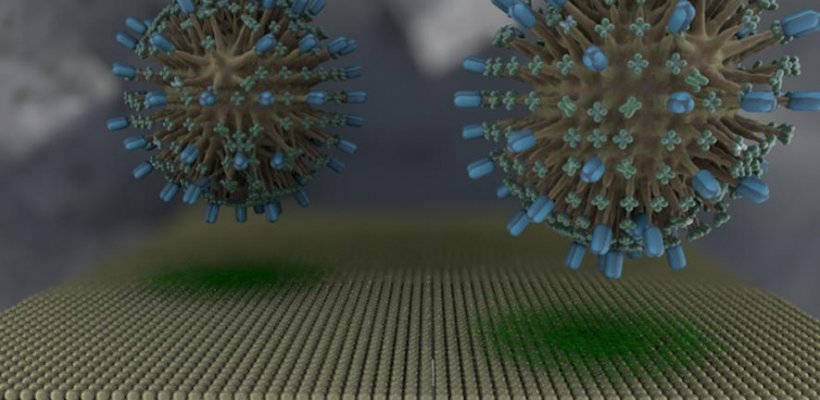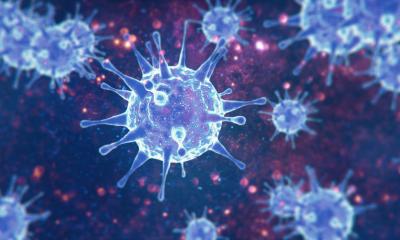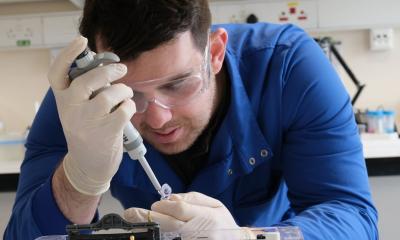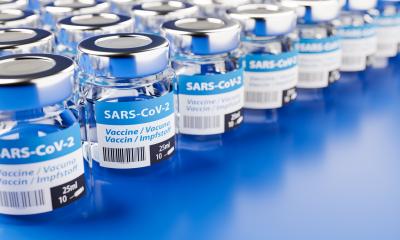
Image credit: Susan Daniel/Cornell University
News • Blocking coronavirus entry portals
Cell ‘membrane on a chip’ could speed up COVID-19 drug screening
Researchers have developed a human cell ‘membrane on a chip’ that allows continuous monitoring of how drugs and infectious agents interact with our cells, and may soon be used to test potential drug candidates for COVID-19.
The researchers, from the University of Cambridge, Cornell University and Stanford University, say their device could mimic any cell type - bacterial, human or even the tough cells walls of plants. Their research recently pivoted to how COVID-19 attacks human cell membranes and, more importantly, how it can be blocked.
The results are published in two recent papers in Langmuir and ACS Nano.
This method is compatible with high-throughput screening and would reduce the number of false positives making it through into the R&D pipeline
Róisín Owens
The devices have been formed on chips while preserving the orientation and functionality of the cell membrane and have been successfully used to monitor the activity of ion channels, a class of protein in human cells which are the target of more than 60% of approved pharmaceuticals.
Cell membranes play a central role in biological signalling, controlling everything from pain relief to infection by a virus, acting as the gatekeeper between a cell and the outside world. The team set out to create a sensor that preserves all of the critical aspects of a cell membrane—structure, fluidity, and control over ion movement—without the time-consuming steps needed to keep a cell alive. The device uses an electronic chip to measure any changes in an overlying membrane extracted from a cell, enabling the scientists to safely and easily understand how the cell interacts with the outside world.
The device integrates cell membranes with conducting polymer electrodes and transistors. To generate the on-chip membranes, the Cornell team first optimised a process to produce membranes from live cells and then, working with the Cambridge team, coaxed them onto polymeric electrodes in a way that preserved all of their functionality. The hydrated conducting polymers provide a more ‘natural’ environment for cell membranes and allows robust monitoring of membrane function.
The Stanford team optimised the polymeric electrodes for monitoring changes in the membranes. The device no longer relies on live cells that are often technically challenging to keep alive and require significant attention, and measurements can last over an extended time period. “Because the membranes are produced from human cells, it’s like having a biopsy of that cell’s surface - we have all the material that would be present including proteins and lipids, but none of the challenges of using live cells,” said Dr Susan Daniel, associate professor of chemical and biomolecular engineering at Cornell and senior author of the ACS Langmuir paper. “This type of screening is typically done by the pharmaceutical industry with live cells, but our device provides an easier alternative,” said Dr Róisín Owens from Cambridge’s Department of Chemical Engineering and Biotechnology, and senior author of the ACS Nano paper. “This method is compatible with high-throughput screening and would reduce the number of false positives making it through into the R&D pipeline.”
“The device can be as small as the size of a human cell and easily fabricated in arrays, which allows us to perform multiple measurements at the same time,” said Dr Anna-Maria Pappa, also from Cambridge and joint first author on both papers.
To date, the aim of the research, supported by funding from the United States Defense Research Projects Agency (DARPA), has been to demonstrate how viruses such as influenza interact with cells. Now, DARPA has provided additional funding to test the device’s effectiveness in screening for potential drug candidates for COVID-19 in a safe and effective way.
Given the significant risks involved to researchers working on SARS-CoV-2, the virus which causes COVID-19, scientists on the project will focus on making virus membranes and fusing those with the chips. The virus membranes are identical to the SARS-CoV-2 membrane but don’t contain the viral nucleic acid. This way new drugs or antibodies to neutralise the virus spikes that are used to gain entry into the host cell can be identified. This work is expected to get underway on 1 August. “With this device, we are not exposed to risky working environments for combating SARS-CoV-2. The device will speed up the screening of drug candidates and provide answers to questions about how this virus works,” said Dr Han-Yuan Liu, Cornell researcher and joint first author on both papers.
Future work will focus on scaling up production of the devices at Stanford and automating the integration of the membranes with the chips, leveraging the fluidics expertise from Stanford PI Juan Santiago who will join the team in August. “This project has merged ideas and concepts from laboratories in the UK, California and New York, and shown a device that works reproducibly in all three sites. It is a great example of the power of integrating biology and materials science in addressing global problems,” said Stanford lead PI Professor Alberto Salleo.
Source: © University of Cambridge (CC BY 4.0)
08.07.2020











